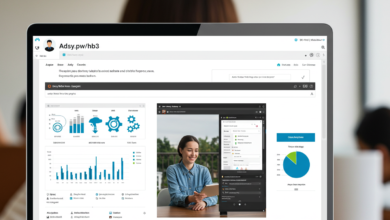4 Tips to Prevent Overspending on Your PPC Campaigns

1. Learn Your Target Audience
Optimizing PPC campaigns starts with knowing who you’re addressing. An unclear picture of your audience may lead to wasted resources by targeting those uninterested in your offering. Outlining the characteristics of your desired consumer base is crucial. Consider details such as age, income, location, web browsing routines, and buying habits. Platforms such as Google Analytics or Facebook Audience Insights are valuable tools to understand these elements accurately.
After defining your audience, streamline your PPC campaign’s targeting dynamics. Prioritize specific keywords that align with their demands and hobbies and avoid unrelated audiences with negative keywords. Focusing your campaigns in this way will enhance their relatability, turning every click into a valuable investment.
2. Effective Budget Planning
Budget allocation stands as a crucial facet of PPC advertising. Realistic budgeting enables reach optimization without over-exploiting your resources. It is a common mistake among startups to overspend quickly, only to find that the cost doesn’t justify the conversion rates.
Initiate with modest daily or monthly campaign budget limits. Calculate the number of clicks you can afford that maintain an acceptable return on ad spend (ROAS) using the projected cost per click (CPC) for your chosen keywords.
Additionally, setting bid caps could be beneficial to establish a ceiling for your CPC campaigns. This safeguards against overspending in bids for high-demand keywords. The crux lies in balancing ambition and practicality—begin with reasonable budgets and gradually escalate them as results show improvement.
3. Regular Monitoring and Optimization
PPC campaigns require continuous surveillance and betterment to control the costs and enhance ad performance, either from yourself or a PPC management agency. Regular examination of your campaign performance metrics such as click-through rates (CTR), conversion rates, and cost per conversion is necessary. Identify the keywords, ads, and placements that are yielding results and phase out any under performers. Automated recommendations from tools like Google Ads can provide insightful direction to tweak your strategy.
A/B testing is an effective method to explore different ad copy, imagery, and call-to-action buttons to understand what connects with your audience. The more you tailor your campaigns based on these observations, the more effective your results will be, reducing instances of overspending.
4. Utilize Free Tools and Resources
Successful PPC campaigns don’t necessitate large spending. A wide range of free tools and resources exists that enable you to optimize your campaigns at no additional expense. For instance, Google Keyword Planner lets you research top-performing keywords specific to your business, and analytic platforms like Ubersuggest and Moz provide beneficial information on search trends and consumer behaviors.
Free ad platforms such as social media channels can be useful to test your messaging before fully committing to PPC campaigns. Promoting posts organically on social media platforms like Instagram or Facebook can offer insights into potential ad performance without any cost.
Leverage these tools and resources to stretch your budget and ensure exceptional campaign outcomes with controlled spending.
Summary
Excessive spending on PPC campaigns need not be a standard for your business. By comprehending your audience, setting attainable budgets, tracking performance regularly, and leveraging free resources, you can establish influential campaigns that optimize results without huge spending. The secret lies in attentiveness and flexibleness—adopt these tactics, and consistent improvements in performance and ROI will follow.



